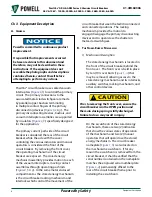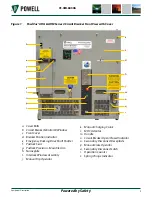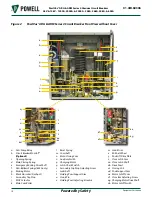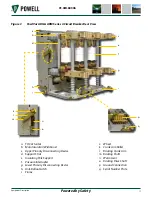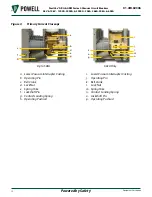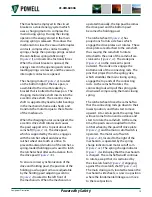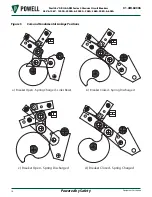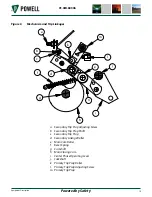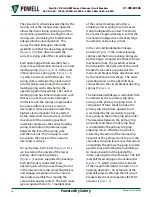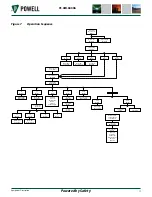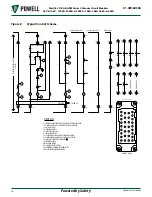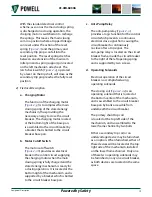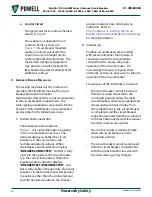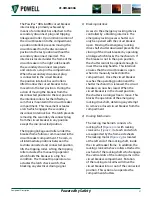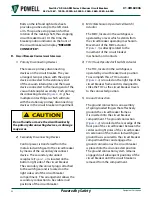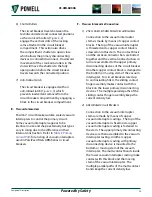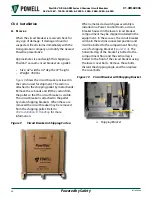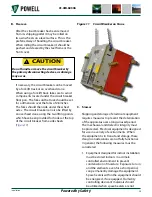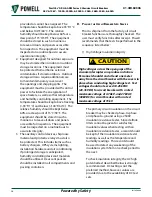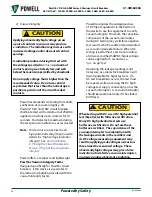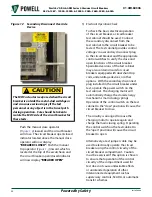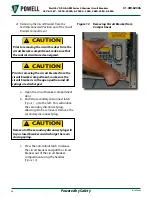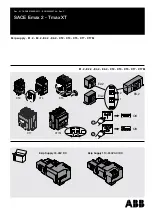
Powered by Safety
®
21
Equipment Description
01.4IB.60306
The PowlVac® ARG & ARM circuit breaker
interlocking is primarily achieved by
means of an interlock bar attached to the
secondary disconnect plug and tripping
linkage and roller. Upon initial insertion of
the circuit breaker into the compartment,
a position interlock prevents moving the
circuit breaker from the disconnected
position to the test position without the
secondary disconnect inserted. This
interlock is located under the frame of the
circuit breaker on the right side beneath
the secondary disconnect receptacle
and contacts a stop in the compartment.
When the secondary disconnect plug
is connected to the circuit breaker,
the position interlock bar and roller is
lifted to allow the circuit breaker to be
moved into the test position. During the
action of moving the breaker from the
disconnected position to the test position
the interlock roller is further lifted by a
cam that is mounted in the circuit breaker
compartment. This movement actuates
a latch which engages the secondary
disconnect interlock bar. The latch prevents
removing the secondary disconnect plug
from the circuit breaker in any position
except the disconnected position.
The tripping linkage and roller under the
breaker frame follow a cam mounted in the
circuit breaker compartment. The cam, in
all intermediate positions between the
test/disconnected and connected position,
lifts the tripping roller. Lifting the tripping
roller actuates the manual trip operator
which holds the breaker in a trip free
condition. The manual trip operator also
actuates the latch check switch, thus
blocking any electrical closing signal.
3) Blocking Interlock
Access to the emergency racking drive is
controlled by a blocking interlock. The
emergency racking access shutter can
only be opened with the circuit breaker
open. Moving the emergency racking
drive shaft shutter downward prevents the
closing of the circuit breaker by operating
a linkage which blocks the mechanism. If
the breaker is not in the open position,
the shutter cannot be opened enough to
insert the racking handle. This interlock
ensures that the circuit breaker is open
when it is manually racked into the
compartment. Once the circuit breaker
reaches the operating position and the
shutter mechanism is released, the circuit
breaker can now be closed. When the
circuit breaker is in the closed position,
the shutter is no longer free to move. This
blocks the operation of the emergency
racking drive shaft, deterring any attempt
to remove a closed circuit breaker from the
compartment.
4) Racking Mechanism
The racking mechanism consists of a
racking shaft (
)
with racking
crank arms (
) at each end which
are supported by the frame side sheets.
The racking motor (
) is located
at the left end of the racking shaft, inside
the circuit breaker frame. In addition, the
racking crank arms have rollers attached to
each end of the racking shaft which engage
the vertical slots of the racking cams in the
circuit breaker compartment. Rotation
of the racking crank arms will drive the
circuit breaker into or out of the connected
position. This action also operates the
compartment shutters.


